Planning worship?
Check out our sister site, ZeteoSearch.org,
for 20+ additional resources related to your search.
- |
User Links
Person Results
Edward Hopper

1816 - 1888 Topics: Jesus/Savior Author of "Jesus, Savior, Pilot Me" in Timeless Truths Rv Edward Hopper DD USA 1816-1888. Born at New York City, the son of a merchant, he graduated from Union Theological Seminary, New York. He married Margaretta Wheeler. He was an author and poet and wrote several books. He pastored the Greenville Presbyterian Church, Sag Harbor Presbyterian Church on Long Island, and the Church of Sea and Land, NYC, a church for sailors, where he remained the rest of his life (for years the church building was shared with the First Chinese Presbyterian Church). Once he was asked to compose a hymn verse for the anniversary of the Seamen’s Friend’s Society meeting. Instead, he brought the verse for a hymn he had written eight years before (noted below). John Edgar Gould saw Hopper’s poem (6 stanzas) and composed a tune for it. Hopper died of a heart attack while writing a poem about heaven at his desk.
John Perry
===============
Hopper, Edward, D.D., was born in 1818, and graduated at Union Theological Seminary, New York, 1842. He is pastor of the Church of Sea and Land, N. Y. He is the author of
1. Jesus, Saviour, pilot me [us]. Jesus the Pilot.
2. They pray the best who pray and watch. Watching & Prayer.
3. Wrecked and struggling in mid-ocean. Wreck & Rescue.
Of these No. 1 appeared in the Baptist Praise Book, 1871, and 2 & 3 in Hymns & Songs of Praise, N. Y., 1874.
-- John Julian, Dictionary of Hymnology
=======================
See also in:
Hymn Writers of the Church
Edward Hopper
J. Wilbur Chapman
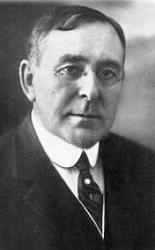
1859 - 1918 Topics: Praise the Lord; Adoration and Praise Jesus Our Savior Author of "Our Great Savior" in The Celebration Hymnal Rv John Wilbur Chapman DD LLD USA 1859-1918. Born in Richmond, IN, he attended Quaker Day School and Methodist Sunday school. At age 17 he made a public declaration of his Christian faith and joined the Richmond Presbyterian Church. He received his seminary degree from Lane Theoloical Seminary, Cincinnati, OH. He was later awarded a Doctorate in Divinity from the College of Wooster, and an LL.D. from Heidelberg University. In 1882 he married Irene Steddon. They had a daughter. His wife died in 1886. In 1888 he married Agnes Pruyn Strain, and they had four children. His second wife died in 1907. In 1910 he married Mabel Cornelia Moulton. He held six pastorates in OH, IN, NY, PA, NY, NY before becoming an evangelist, generally traveling with gospel singer, Charles Alexander. In 1893 he preached with D. L. Moody. Billy Sunday was one of his disciples on the circuit. In 1895 he was appointed Corresponding Secretary of the Presbyterian General Assembly's Committeee on Evangelism, overseeing activities of 51 evangelists in 470 cities. He developed campaign tactics to maximize evangelical successes, trying them first in Pittsburgh, then Syracuse. With funding from philanthropist, John H. Converse, a wealthy Presbyterian, Chapman joined with Alexander to launch evangelical campaigns in 1907. He assembled 21 evangelistic teams after that to cover 42 sections of Philadelphia, preaching for several weeks. 8000 conversions resulted. They repeated this in NC. In 1909 they started a worldwide campaign in Vancouver, BC, and took in cities in Australia, the Phillipines, China, Korea, and Japan. Chapman also held religious summer conferences at Winona Lake, IN, Montreat, NC, and Long Island, NY. Mass evangelism was losing favor in 1910, so he was back holding large revivals with Alexander in 1912. He was also elected moderator of the Presbyterian Church General Assembly, and under so much stress, he developed gall stones. The surgery was too much, and he died two days later. He was also a prolific writer of religious works and hymn lyrics. 19 works.
John Perry
J. Wilbur Chapman
Frank E. Graeff

1860 - 1919 Topics: Christ Comforter; Christ Savior Author of "Does Jesus Care?" in Hymns for the Living Church Frank E. Graeff was a minister in the Philadelphia Conference of the Methodist Episcopal Church. He was a prolific writer of hymns, stories, poems and articles.
Dianne Shapiro, from "The Singers and Their Songs: sketches of living gospel hymn writers" by Charles Hutchinson Gabriel (Chicago: The Rodeheaver Company, 1916)
Frank E. Graeff
Charles Wesley
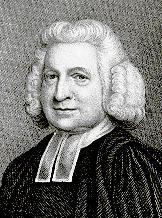
1707 - 1788 Topics: God Known in Jesus Christ Praise to Christ; Descants; Jesus Christ; Jesus Christ: Name; Jesus Christ: Reign; Jesus Christ: Savior; Proclamation Author of "You Servants of God" in Chalice Hymnal Charles Wesley, M.A. was the great hymn-writer of the Wesley family, perhaps, taking quantity and quality into consideration, the great hymn-writer of all ages. Charles Wesley was the youngest son and 18th child of Samuel and Susanna Wesley, and was born at Epworth Rectory, Dec. 18, 1707. In 1716 he went to Westminster School, being provided with a home and board by his elder brother Samuel, then usher at the school, until 1721, when he was elected King's Scholar, and as such received his board and education free. In 1726 Charles Wesley was elected to a Westminster studentship at Christ Church, Oxford, where he took his degree in 1729, and became a college tutor. In the early part of the same year his religious impressions were much deepened, and he became one of the first band of "Oxford Methodists."
In 1735 he went with his brother John to Georgia, as secretary to General Oglethorpe, having before he set out received Deacon's and Priest's Orders on two successive Sundays. His stay in Georgia was very short; he returned to England in 1736, and in 1737 came under the influence of Count Zinzendorf and the Moravians, especially of that remarkable man who had so large a share in moulding John Wesley's career, Peter Bonier, and also of a Mr. Bray, a brazier in Little Britain. On Whitsunday, 1737, [sic. 1738] he "found rest to his soul," and in 1738 he became curate to his friend, Mr. Stonehouse, Vicar of Islington, but the opposition of the churchwardens was so great that the Vicar consented that he "should preach in his church no more." Henceforth his work was identified with that of his brother John, and he became an indefatigable itinerant and field preacher. On April 8, 1749, he married Miss Sarah Gwynne. His marriage, unlike that of his brother John, was a most happy one; his wife was accustomed to accompany him on his evangelistic journeys, which were as frequent as ever until the year 1756," when he ceased to itinerate, and mainly devoted himself to the care of the Societies in London and Bristol. Bristol was his headquarters until 1771, when he removed with his family to London, and, besides attending to the Societies, devoted himself much, as he had done in his youth, to the spiritual care of prisoners in Newgate. He had long been troubled about the relations of Methodism to the Church of England, and strongly disapproved of his brother John's "ordinations." Wesley-like, he expressed his disapproval in the most outspoken fashion, but, as in the case of Samuel at an earlier period, the differences between the brothers never led to a breach of friendship. He died in London, March 29, 1788, and was buried in Marylebone churchyard. His brother John was deeply grieved because he would not consent to be interred in the burial-ground of the City Road Chapel, where he had prepared a grave for himself, but Charles said, "I have lived, and I die, in the Communion of the Church of England, and I will be buried in the yard of my parish church." Eight clergymen of the Church of England bore his pall. He had a large family, four of whom survived him; three sons, who all became distinguished in the musical world, and one daughter, who inherited some of her father's poetical genius. The widow and orphans were treated with the greatest kindness and generosity by John Wesley.
As a hymn-writer Charles Wesley was unique. He is said to have written no less than 6500 hymns, and though, of course, in so vast a number some are of unequal merit, it is perfectly marvellous how many there are which rise to the highest degree of excellence. His feelings on every occasion of importance, whether private or public, found their best expression in a hymn. His own conversion, his own marriage, the earthquake panic, the rumours of an invasion from France, the defeat of Prince Charles Edward at Culloden, the Gordon riots, every Festival of the Christian Church, every doctrine of the Christian Faith, striking scenes in Scripture history, striking scenes which came within his own view, the deaths of friends as they passed away, one by one, before him, all furnished occasions for the exercise of his divine gift. Nor must we forget his hymns for little children, a branch of sacred poetry in which the mantle of Dr. Watts seems to have fallen upon him. It would be simply impossible within our space to enumerate even those of the hymns which have become really classical. The saying that a really good hymn is as rare an appearance as that of a comet is falsified by the work of Charles Wesley; for hymns, which are really good in every respect, flowed from his pen in quick succession, and death alone stopped the course of the perennial stream.
It has been the common practice, however for a hundred years or more to ascribe all translations from the German to John Wesley, as he only of the two brothers knew that language; and to assign to Charles Wesley all the original hymns except such as are traceable to John Wesley through his Journals and other works.
The list of 482 original hymns by John and Charles Wesley listed in this Dictionary of Hymnology have formed an important part of Methodist hymnody and show the enormous influence of the Wesleys on the English hymnody of the nineteenth century.
-- Excerpts from John Julian, Dictionary of Hymnology (1907)
==================
Charles Wesley, the son of Samuel Wesley, was born at Epworth, Dec. 18, 1707. He was educated at Westminster School and afterwards at Christ Church, Oxford, where he graduated M.A. In 1735, he took Orders and immediately proceeded with his brother John to Georgia, both being employed as missionaries of the S.P.G. He returned to England in 1736. For many years he engaged with his brother in preaching the Gospel. He died March 29, 1788. To Charles Wesley has been justly assigned the appellation of the "Bard of Methodism." His prominence in hymn writing may be judged from the fact that in the "Wesleyan Hymn Book," 623 of the 770 hymns were written by him; and he published more than thirty poetical works, written either by himself alone, or in conjunction with his brother. The number of his separate hymns is at least five thousand.
--Annotations of the Hymnal, Charles Hutchins, M.A., 1872.
Charles Wesley
Mrs. C. H. Morris

1862 - 1929 Person Name: Leila N. Morris, 1862-1929 Topics: Jesus Christ Blood of; Jesus Christ Savior; Elements of Worship Confession Author of "Nearer, Still Nearer" in Lift Up Your Hearts Lelia (Mrs. C.H.) Morris (1862-1929) was born in Pennsville, Morgan County, Ohio. When her family moved to Malta on the Muskingum River she and her sister and mother had a millinery shop in McConnelsville. She and her husband Charles H. Morris were active in the Methodist Episcopal Church and at the camp meetings in Sebring and Mt. Vernon. She wrote hymns as she did her housework. Although she became blind at age 52 she continued to write hymns on a 28-foot long blackboard that her family had built for her. She is said to have written 1000 texts and many tunes including "Sweeter as the years go by."
Mary Louise VanDyke
Mrs. C. H. Morris
E. S. Elliott
1836 - 1897 Person Name: Emily E. S. Elliott, 1836-1897 Topics: Jesus Our Savior His Birth; Jesus Our Savior Advent; Jesus Our Savior Birth; Jesus Our Savior Earthly Ministry Author of "Thou Didst Leave Thy Throne" in Great Hymns of the Faith Elliott, Emily Elizabeth Steele, third daughter of the late Rev. E. B. Elliott, of Brighton, author of the Horae Apocalypticae was born at Brighton, and now [1887] lives in London. She has contributed hymns, some of which have obtained wide acceptance, to the choir manuals, and Additional Hymns, 1866 (Nos. 8, 34) for use in St. Mark's Church, Brighton; to the Church Missionary Juvenile Instructor, which she edited for six years. Her Chimes of Consecration, a volume of 70 hymns and poems, was published in 1873, and her Chimes for Daily Service in 1880. The latter contains 71 hymns in two parts. The second part of 48 hymns is also published separately as Under the Pillow, for use as a cheap large type hymn-book (with corresponding tune-book) for hospitals and infirmaries and the sick generally. Her hymn, “Let us keep the feast" (Holy Communion), was first published in The Feast of Sacrifice and The Feast of 'Remembrance, 1865, in 5 stanzas of 5 lines. [Rev. James Mearns, M.A.]
-- John Julian, Dictionary of Hymnology (1907)
=================
Elliott, Emily E. 8., p. 328, ii. The following additional hymns by Miss Elliott have recently come into common use:—
1. Brothers, sisters, pray for us. [Missionaries' Farewell.] Appeared in the C. M. Gleaner, Sept. 1896, p. 14?, and entitled "The Missionaries' Departing Petition." In the Church Miss. Hymn Book, 1899.
2. Rabboni, Master, we have heard. [Consecration of Self to Duty.] In theC. M. Gleaner, Dec. 1895, p. 195. It was sung for the first time at the Gleaners' Union Anniversary, 1895. In the Church Miss. Hymn Book, 1899.
3. Full consecration! heart and spirit yielded. [Full Consecration.] Given in Hymns of Consecration and Faith, 1902.
4. They come and go, the seasons fair, [Second Advent.] In the C. M. Gleaner, Nov. 1891, p. 172, as "What will be when the King comes?" It was sung for the first time at the Gleaners' Union Anniversary, Oct. 30, 1891. In the Church Miss. Hymn Book, 1899.
Miss Elliott was born at Brighton, July 22, 1836, and died at Mildmay, London, Aug. 3, 1897.
--John Julian, Dictionary of Hymnology, New Supplement (1907)
E. S. Elliott
J. Lincoln Hall
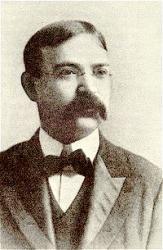
1866 - 1930 Topics: Christ Comforter; Christ Savior Composer of "MY SAVIOR CARES" in Hymns for the Living Church Used pseudonyms Maurice A. Clifton and Arthur Wilton.
===============
Joseph Lincoln Hall DMus USA 1866-1930. Born in Philadelphia, PA, to musical parents, he also was musical, having a good tenor voice. He was an organist and music teacher. At age 19 he led a 100 member choir for 10 years. He studied music and graduated with honors from the University of PA, later receiving a Doctor of Music degree from Harriman University, from which he was an alumnus. In 1896 he married Eva Victoria Withington, and they had four children. Three lived to adulthood, Lincoln, Ralph, and Philip. A musician, he was a great song leader and choral conductor, conducting campmeeting choirs in PA, OH, and FL, at the Gainesville Bible Conference as well. He became a gospel song composer, arranger, editor, and publisher. He wrote cantatas, oratorios, choir anthems, and hundreds of gospel songs. He also edited several hymnals. Along with Irvin Mack, he founded the Hall-Mack Publishing Company (later Rodeheaver). They published nine songbooks. He was a member of the 7th Street Methodist Episcopal Church in Philadelphia. He died in Philadelphia.
John Perry
J. Lincoln Hall
William Croft
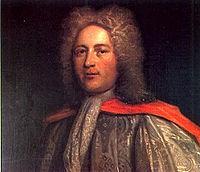
1678 - 1727 Topics: God Known in Jesus Christ Praise to Christ; Descants; Jesus Christ; Jesus Christ: Name; Jesus Christ: Reign; Jesus Christ: Savior; Proclamation Composer (attributed to) of "HANOVER" in Chalice Hymnal William Croft, Mus. Doc. was born in the year 1677 and received his musical education in the Chapel Royal, under Dr. Blow. In 1700 he was admitted a Gentleman Extraordinary of the Chapel Boyd; and in 1707, upon the decease of Jeremiah Clarke, he was appointed joint organist with his mentor, Dr. Blow. In 1709 he was elected organist of Westminster Abbey. This amiable man and excellent musician died in 1727, in the fiftieth year of his age. A very large number of Dr. Croft's compositions remain still in manuscript.
Cathedral chants of the XVI, XVII & XVIII centuries, ed. by Edward F. Rimbault, London: D. Almaine & Co., 1844
William Croft
Phoebe Palmer Knapp
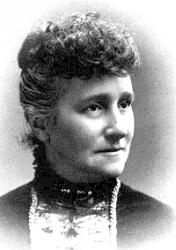
1839 - 1908 Person Name: Phoebe P. Knapp Topics: God's Church Life of Discipleship: Trust and Assurance; Assurance; Comfort; Commitment; Jesus Christ: Blood; Jesus Christ: Savior; Praise; Rest; Trust Composer of "ASSURANCE" in Chalice Hymnal As a young girl Phoebe Palmer Knapp (b. New York, NY, 1839; d. Poland Springs, ME, 1908) displayed great musical talent; she composed and sang children’s song at an early age. The daughter of the Methodist evangelist Walter C. Palmer, she was married to John Fairfield Knapp at the age of sixteen. Her husband was a founder of the Metropolitan Life Insurance Company, and after his death, she shared her considerable inherited wealth with various charitable organizations. She composed over five hundred gospel songs, of which the tunes for “Blessed Assurance” and “Open the Gates of the Temple” are still popular today.
Bert Polman
Phoebe Palmer Knapp
S. J. Vail
1818 - 1884 Person Name: Silas J. Vail, 1818-1884 Topics: Discipleship; Fellowship with God; Jesus Christ Savior; Christian Pilgrimage Composer of "CLOSE TO THEE" in Total Praise In his youth Silas Jones Vail learned the hatter's trade at Danbury, Ct. While still a young man, he went to New York and took employment in the fashionable hat store of William H. Beebe. Later he established himself in business as a hatter at 118 Fulton Street, where he was for many years successful. But the conditions of trade changed, and he could not change with them. After his failure in 1869 or 1870 he devoted his entire time and attention to music. He was the writer of much popular music for use in churches and Sunday schools. Pieces of music entitled "Scatter Seeds of Kindness," "Gates Ajar," "Close to Thee," "We Shall Sleep, but not Forever," and "Nothing but Leaves" were known to all church attendants twenty years ago. Fanny Crosby, the blind authoress, wrote expressly for him many of the verses he set to music.
--Vail, Henry H. (Henry Hobart). Genealogy of some of the Vail family descended from Jeremiah Vail at Salem, Mass., 1639, p. 234.
S. J. Vail


 My Starred Hymns
My Starred Hymns

